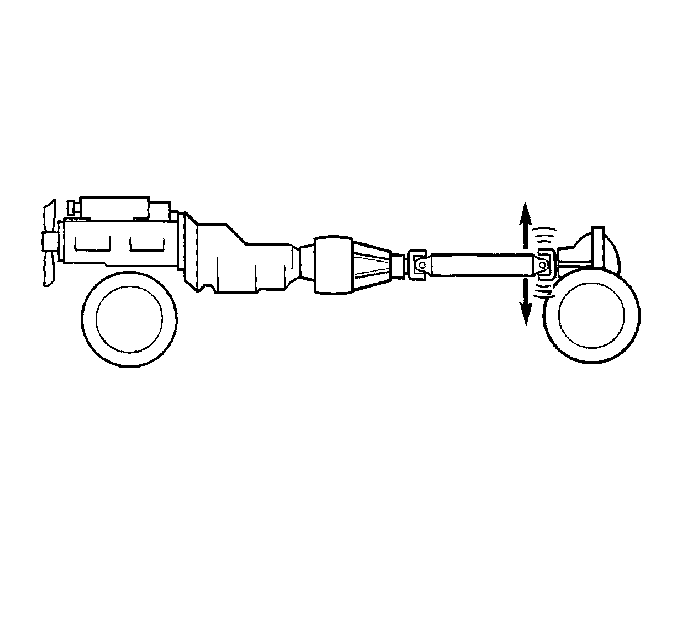
The following components
are possible sources of driveline vibration:
| • | The transmission output shaft |
| • | The propeller shaft/s (driveshaft/s) |
The above components are either bolted or splined together. Therefore,
all of the components rotate at the same speed, vibrate at the same frequency,
and have the same symptoms.
Driveline vibrations may relate either to the first order or to the
second order of driveline rotation. Driveline vibrations are always related
to the speed of the vehicle. The vibration is often related to torque.
If the vibration is worse or only noticeable when accelerating, decelerating,
or crowding the throttle, the vibration is related to the torque and the
vibration will always occur at the same speed. If a vibration is sensitive
both to torque and to speed, the driveline is the probable cause. Tire/wheel
vibrations are speed-sensitive, but not torque-sensitive.
First-Order Driveline Vibration Symptoms
The following symptoms may indicate first-order driveline vibration:
| • | The vibration is related to vehicle speed. |
| • | The vibration is torque sensitive. |
| • | A boom or moan noise is present. |
| • | The vibration occurs commonly above 72 km/h (45 mph),
but possibly as low as 48 km/h (30 mph). |
| • | The roughness or buzz vibration is felt in the seat, the floor
or the steering wheel. |
| • | The corresponding frequency on the EVA equals first-order driveline
rotation (25-60 Hz), depending on the speed of the vehicle and
the ratio of the axle. Refer to
Matching Frequency to Component RPM
in order to obtain the rotation
speed of the propeller shaft. |

